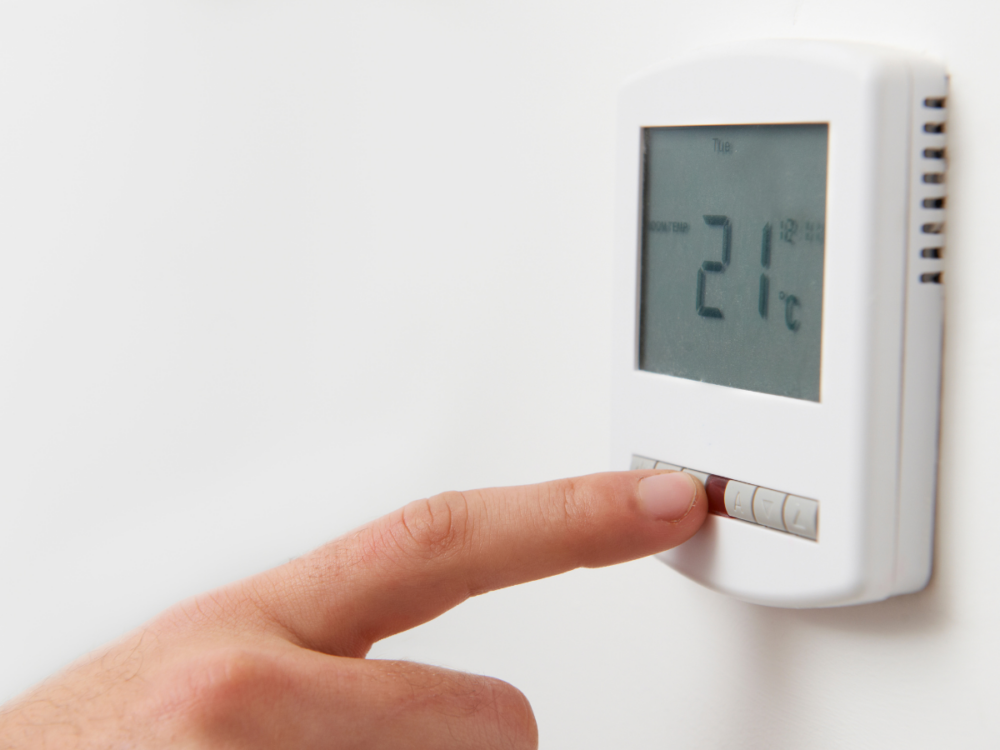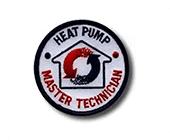Sufficient heating is important for everyday life, and the thermostat is the control center for their home’s heating and cooling systems. But have you ever taken a closer look at your thermostat’s settings and noticed an option labeled “Auxiliary Heat”? If so, you’re probably wondering exactly what that means and when you should use it.
The auxiliary heat setting for heat pumps can be a confusing option on a thermostat, and many people don’t fully understand its purpose.
This blog post will explain information on what auxiliary heat is and how it differs from your primary heat source. By the end, you’ll have a firm grasp of this important thermostat function and feel confident operating your whole-home climate control.
What is auxiliary heat?
Auxiliary heat, also known as “emergency heat” or “aux heat”, is an additional source of heating that can be used to supplement your home’s primary heating system. It typically consists of electric resistance heat strips that are built into your HVAC system and activated by the thermostat when needed.
This secondary heating source is mainly used in colder climates or during extreme weather conditions when the primary heat source may struggle to keep up with heating demands.
The difference between auxiliary heat vs. emergency heat
Auxiliary heat and emergency heat are two terms that are often used interchangeably, causing confusion for homeowners. However, there is a subtle difference between the two “aux” and “em” functions on your thermostat.
In simple terms, auxiliary heat is designed to supplement your primary heating source during colder weather or extreme conditions. It kicks in automatically when your home’s temperature drops below a certain level and helps to maintain a comfortable temperature.
In comparison, emergency heat is manually activated by the homeowner when there is an issue with their primary heating system. It overrides the normal heating settings and uses only the auxiliary heat source to warm up your home. This option should only be used in emergency situations, such as a malfunctioning furnace or heat pump.
Is auxiliary heat more expensive to run?
In general, using auxiliary heat in your house will result in higher energy costs because it is more expensive than your primary heating source. Electric resistance heat strips are known for their less-than-stellar efficiency compared to other heating methods, such as a heat pump or gas furnace.
Furthermore, if you find yourself relying on auxiliary heat frequently, it may be a sign that your primary heating system is not functioning properly and needs maintenance or repair. This can result in even higher energy costs and potential long-term damage to your HVAC system.
Those residing in a colder natural environment are also likely to use auxiliary heat more often, as it is needed to keep up with heating demands. This can lead to higher energy bills during the winter season.
If you find yourself frequently using auxiliary heat, it’s always best to have a professional technician inspect your heating system and give their expert opinion. They can identify any issues and recommend the best course of action to keep your system functioning efficiently and cost-effectively.
What to do if your heat pump is stuck on auxiliary heat mode
If you’ve noticed that your heat pump is stuck on auxiliary heat mode, there could be a few different reasons for this. Before calling in a professional, it’s important to troubleshoot the issue and see if it can be resolved on your own.
First, check and replace the air filter if it’s dirty. A clogged air filter can cause your heat pump to run inefficiently and potentially activate the auxiliary heat unnecessarily.
Next, check your thermostat settings. Make sure that the fan is set to “auto” rather than “on”, as running the fan constantly can cause the system to switch to auxiliary heat mode.
If these steps do not resolve the issue, for your safety, it’s best to call in a professional HVAC technician. They will have the expertise and tools necessary to diagnose the problem and make any necessary repairs. Attempting to fix a heat pump on your own can be dangerous and may result in further damage or injuries.
Having problems with your auxiliary heat? Reach out to Autumn Air
If you’re experiencing problems with your auxiliary heat, it’s important to address them as soon as possible. Leaving the issue unresolved can not only result in discomfort for you and your family, but it could also lead to higher energy costs and potential damage to your HVAC system.
In situations like this, it’s best to reach out to a licensed and experienced HVAC professional. No matter the season, Autumn Air offers comprehensive heating and cooling services at a reasonable price, including maintenance, repair, and installation of auxiliary heat systems.
Our team of skilled technicians can quickly diagnose any issues with your system and provide solutions to get your home back to a comfortable temperature. We’ve provided service for homeowners in Arizona for almost two decades and guarantee customer satisfaction.
Don’t let problems with your auxiliary heat go unchecked. Contact Autumn Air today for reliable and trustworthy HVAC services.














